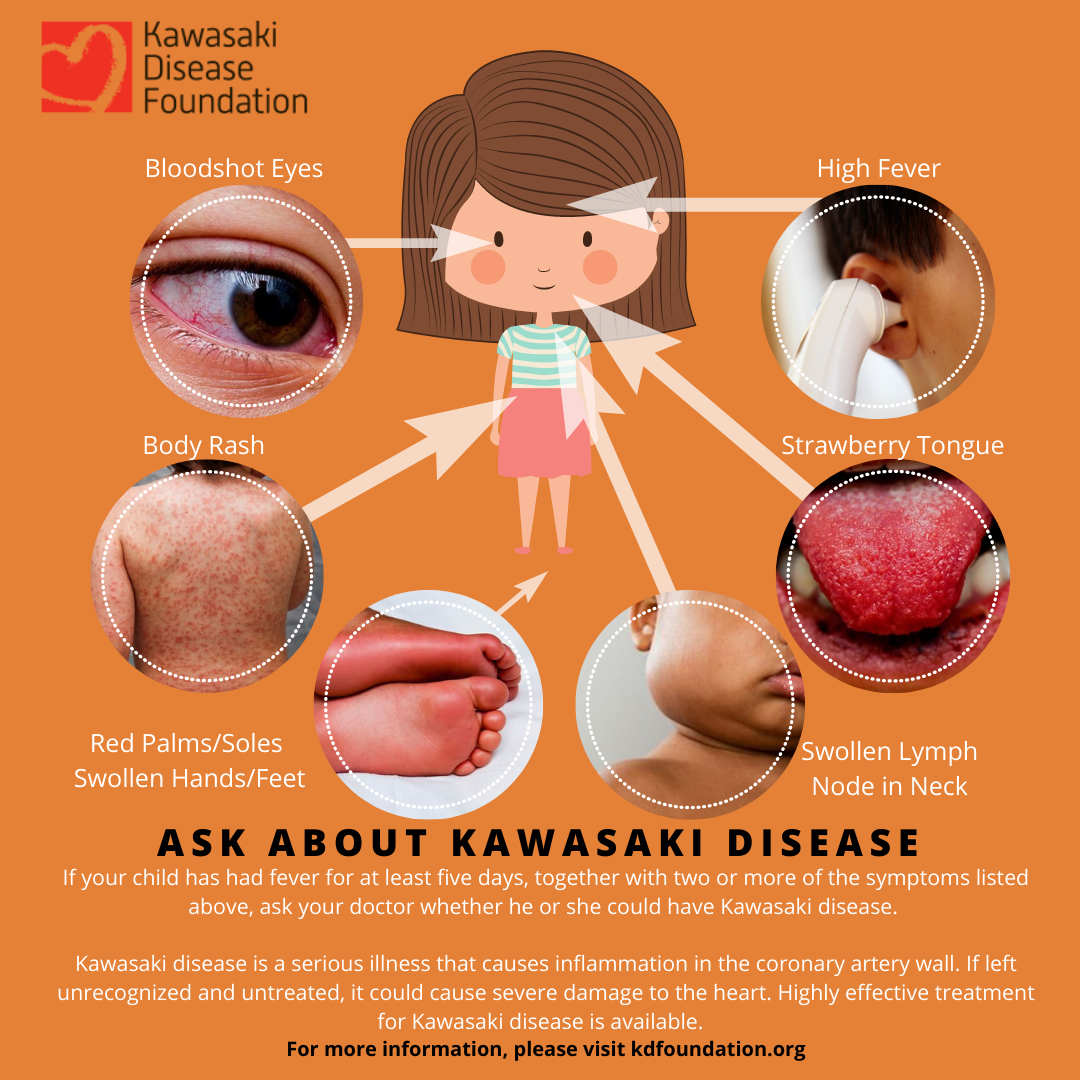
Kawasaki Disease: Understanding the Rare Illness in Children
Kawasaki Disease (KD) is a rare but serious condition that primarily affects children under the age of five. Named after Dr. Tomisaku Kawasaki, who first described the illness in 1967, KD is now recognized worldwide as one of the leading causes of acquired heart disease in children. Despite its potentially severe complications, early diagnosis and treatment can lead to excellent outcomes. Raising awareness about Kawasaki Disease is essential to ensure timely medical intervention and to educate parents, caregivers, and healthcare providers about its symptoms, causes, and treatment.
What is Kawasaki Disease?
Kawasaki Disease is an inflammatory condition that affects the blood vessels throughout the body, including the coronary arteries that supply blood to the heart. The exact cause remains unknown, but researchers believe it may be triggered by an abnormal immune response to an infection in genetically predisposed children.
KD is not contagious and is more common in boys than girls. It is particularly prevalent in children of Asian descent, though it can affect children of all ethnicities. While the condition is rare, it’s important for parents and caregivers to be aware of its symptoms, as early recognition can prevent complications.
Symptoms of Kawasaki Disease
Kawasaki Disease is typically diagnosed based on clinical symptoms, as there are no specific diagnostic tests. The illness progresses through three stages, each with distinct features:
1. Acute Stage:
- Fever: A high and persistent fever lasting at least five days that does not respond well to typical fever-reducing medications.
- Rash: A widespread rash, often involving the torso and limbs.
- Conjunctivitis: Redness in both eyes without discharge.
- Red Lips and Tongue: Cracked, swollen lips and a “strawberry tongue” (red and bumpy appearance).
- Swollen Extremities: Swelling and redness of the hands and feet.
- Lymph Node Swelling: Enlarged lymph nodes, particularly in the neck.
2. Subacute Stage:
- Peeling skin, particularly on the fingers and toes.
- Joint pain and irritability.
- Risk of developing coronary artery aneurysms.
3. Convalescent Stage:
- Symptoms gradually resolve, but lingering inflammation may persist. Laboratory markers may show abnormalities for weeks.
Complications of Kawasaki Disease
If left untreated, Kawasaki Disease can lead to serious complications, most notably affecting the heart. Up to 25% of untreated cases result in coronary artery aneurysms, which increase the risk of heart attack and other cardiovascular issues. Other complications may include myocarditis (inflammation of the heart muscle), arrhythmias, and valvular heart disease.
Fortunately, with timely treatment, the risk of long-term complications is significantly reduced.
Diagnosis and Treatment
Early diagnosis is critical for effective management. Pediatricians typically rely on clinical criteria and may use additional tests such as blood work, echocardiograms, and electrocardiograms to assess the extent of inflammation and heart involvement.
The mainstay of treatment for Kawasaki Disease is:
- Intravenous Immunoglobulin (IVIG): A single high-dose infusion of IVIG within the first 10 days of illness reduces the risk of coronary artery complications.
- Aspirin Therapy: Used to reduce inflammation and prevent blood clots.
In severe or refractory cases, corticosteroids or other immunosuppressive therapies may be considered. Close follow-up care with a pediatric cardiologist is essential to monitor for any long-term cardiac effects.
Raising Awareness: Why It Matters
Despite its serious potential complications, Kawasaki Disease is often underdiagnosed due to its rarity and non-specific symptoms. Awareness campaigns can:
- Educate Parents and Caregivers: Understanding the signs and symptoms can lead to earlier medical evaluation.
- Empower Healthcare Providers: Ensuring that clinicians are familiar with KD’s presentation can facilitate prompt recognition and treatment.
- Advocate for Research: Increased funding and research can help uncover the underlying causes and improve treatment protocols.

What Can Parents Do?
If you suspect that your child may have Kawasaki Disease, seek medical attention immediately. Advocate for your child by asking about Kawasaki Disease if the symptoms align, particularly if a high fever persists without a clear cause. Early treatment is crucial to prevent complications.
Conclusion
Kawasaki Disease, while rare, is a condition that demands attention due to its potential impact on children’s health. Early diagnosis and treatment can dramatically reduce the risk of serious complications, emphasizing the importance of awareness among parents, caregivers, and healthcare providers. By understanding the symptoms, treatment options, and need for ongoing research, we can work together to improve outcomes for children affected by this mysterious illness.
Through continued advocacy and education, we can ensure that no child suffers unnecessarily from Kawasaki Disease. Together, we can make a difference by spreading knowledge and supporting research into this rare but significant condition.

